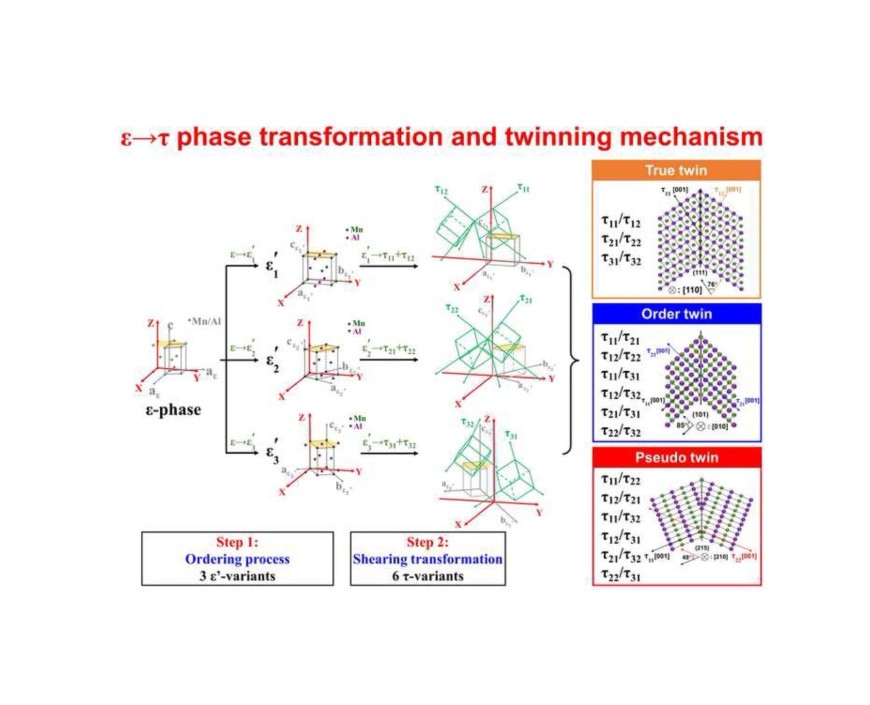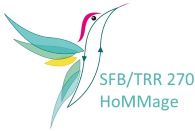On the ε → τ phase transformation and twinning in L10−MnAl alloys
New publication
2022/04/20

Y. Jiaae, H. Ding, Y. Wu, J. Wang, H. Wu, T. Ma, S. Zhao, K. P. Skokov, A. Aubert, F. Maccari, OliverGutfleisch, Y. Xu, J. Niu, B. Qiao, S. Zhao, C. Jiang
Acta Materialia, 232, 117892 (2022).
Formation of twins have been recognized as the bottleneck that limit the high-performance of L10-type Mn-Al permanent magnets. Although it is known that twinning occurs as a consequence of ε → τ phase transition, the detailed formation mechanism is still unclear. We studied systematically the phase transformation processes of ε → τ by transmission electron microscopy. The two-step transformation includes first a diffusion-controlled ordering transformation from disordered A3-type ε-phase to ordered B19-type ε’-variants, and second, a shearing transformation from ε’-phase to L10-type τ-phase via the stepwise atomic displacement with the vector of <100>ε’. The two τ-variants generated from the same ε’-variant constitute the true twins with included angle of ∼76° The combination of τ-variants which are generated from different ε’-variant produces the order twins and pseudo twins with the included angles of ∼85° and ∼48°, respectively. The effects of true twins and order twins on coercivity are compared by studying the domain structures during demagnetization. The order-twin boundary has a more significantly effect on promoting the nucleation and propagation of the reversal domain, giving rise to a severer degradation effect on coercivity compared with true-twin boundary. The combination of directional solidification and hot-deformation is identified to effectively manipulate the ε → τ phase transition based on the proposed mechanism, as demonstrated by good magnetic properties of ∼400 mT in coercivity and ∼0.67 in remanence ratio in L10−MnAl magnets. Our work explains the mechanism on the formation of various twins in L10−MnAl, and offers guidelines of fabricating high-performance twins-containing MnAl permanent magnets.



